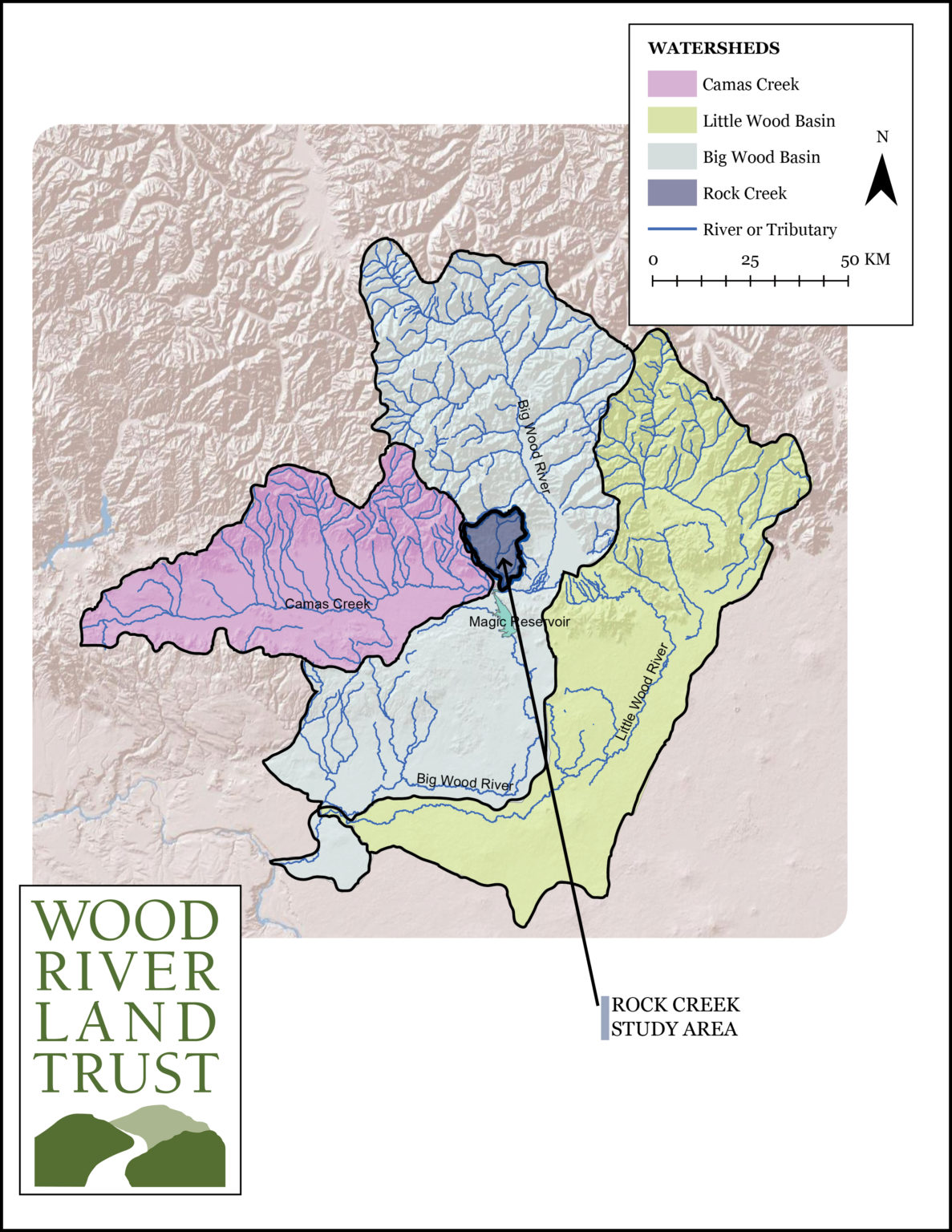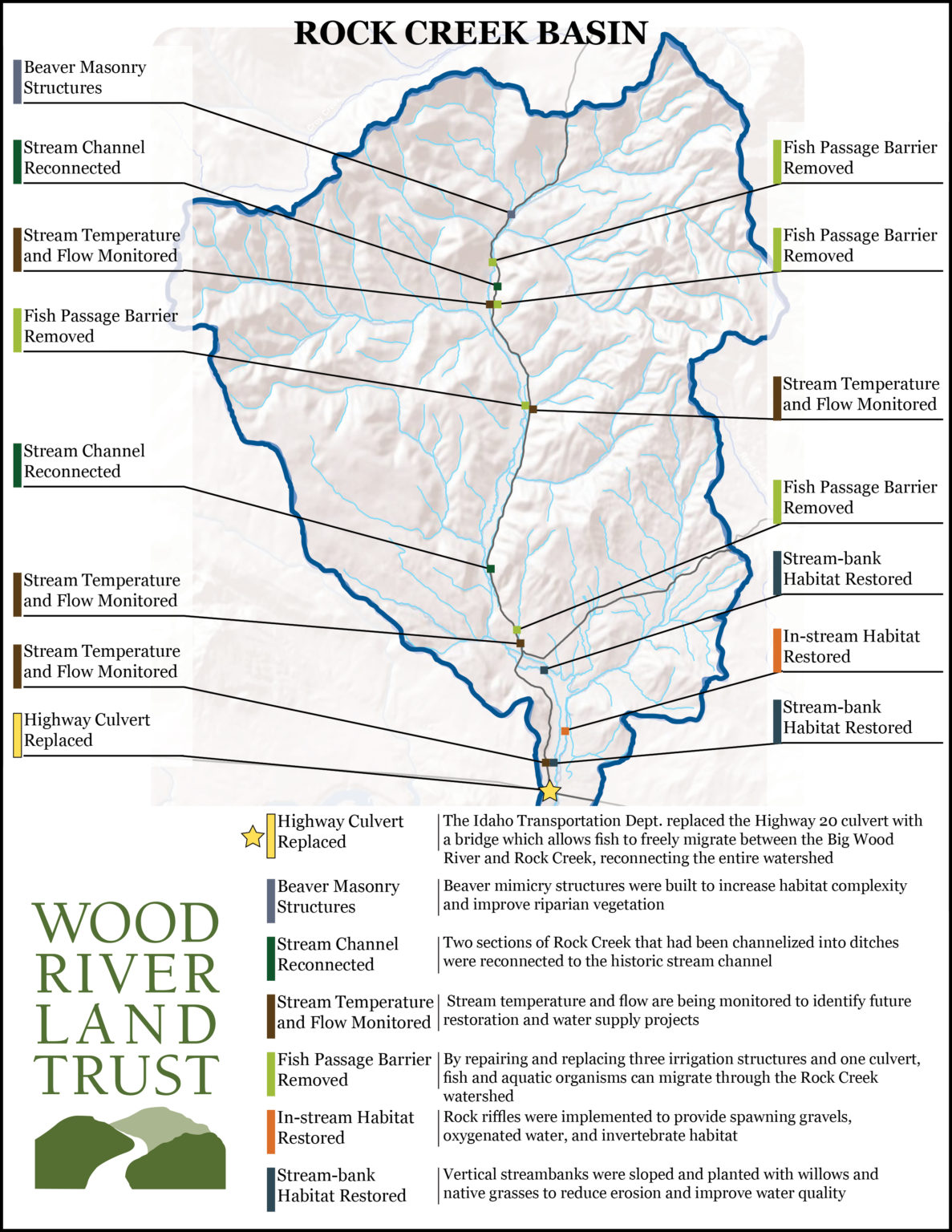The Importance of Tributary Connectivity
The Big Wood, Little Wood, and Camas Creek Watersheds combined are 2,137,696 acres. As water falls in the form of rain or snow over these acres, it slowly makes it’s way down to the Big Wood River and Camas Creeks into Magic Reservoir. Below Magic Reservoir, it joins the Little Wood Rivers, and they all drain together toward the Malad River and eventually out to the Snake River.
The water that makes it into the Big and Little Wood Rivers from the acres of watershed do so via tributaries. These little streams, babbling brooks, and charming creeks flow from mountain tops and across valley bottoms to feed the main river systems.
A key way to increase the overall health of our watershed and fishery along with our water supply is to restore and reconnect these tributaries. Restoring tributaries improves water quality, fish and wildlife habitat, and groundwater. Reconnecting tributaries with the river systems they are meant to feed enables fish and other aquatic species to access smaller streams with rich supplies of nutrients. The Wood River Land Trust works on tributaries by removing unnatural barriers and restoring stream health. As we face increasing climate-related changes to our fisheries, tributary connectivity will provide critical to maintaining overall health. Tributaries are generally cooler than the main river, so as our water temperatures rise, tributaries offer refuge to fish populations. As we see increased flooding - whether from rain on snow events, or from rapid spring warming, tributaries allow fish to get out of flooded rivers. The more miles of tributaries we can connect, the more options that fish have to escape these and other climate related fishery changes. One of our most recent projects has been to restore and reconnect Rock Creek with the Big Wood River, with the help of our partners The Nature Conservancy, Trout Unlimited, and University of Idaho. By removing barriers to the Rock Creek tributary, we were able to reconnect an additional 26,146 acres to the Big Wood Watershed that had been disconnected!
Study Area

The image below shows the Camas Creek, Little Wood, and Big Wood watersheds. You can see visually the impact that Rock Creek has in the watershed. We are excited that it's 26,146 acres are now connected to the overall watershed!
Restoration Methods Used
The image below describes the restoration and monitoring methods that we used to reconnect the Rock Creek tributaries to the Big Wood River.

Projects

Highway Culvert Replaced
The Idaho Transportation Dept. replaced the Highway 20 culvert with a bridge which allows fish to freely migrate between the Big Wood River and Rock Creek, reconnecting the entire watershed.

Beaver Mimicry Structures
Beaver mimicry structures were built to increase habitat complexity and improve riparian vegetation.
![]()
Stream Channel Reconnection
Two sections of Rock Creek that had been channelized into ditches were reconnected to the historic stream channel.

Stream Temperature And Flow Monitored
Stream temperature and flow are being monitored to identify future restoration and water supply projects.
![]()
Fish Passage Barrier Removed
By repairing and replacing three irrigation structures and one culvert, fish and aquatic organisms can migrate through the Rock Creek watershed.

In-Stream Habitat Restored
Rock riffles were implemented to provide spawning gravels, oxygenated water, and invertebrate habitat.

Stream Bank Habitat Restored
Vertical streambanks were sloped and planted with willows and native grasses to reduce erosion and improve water quality.

